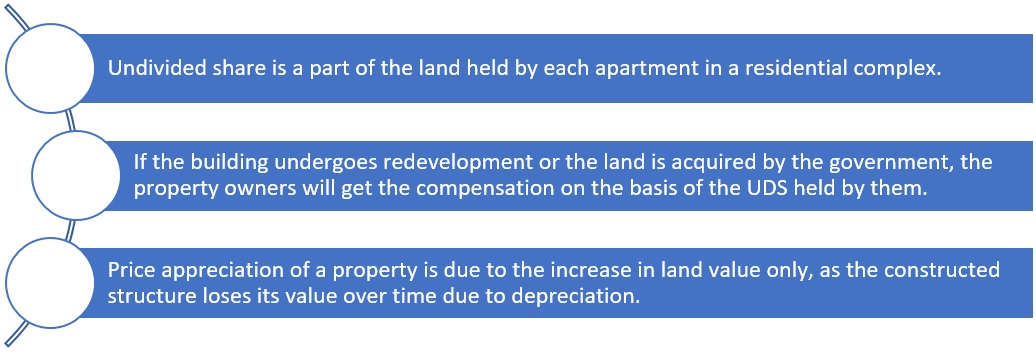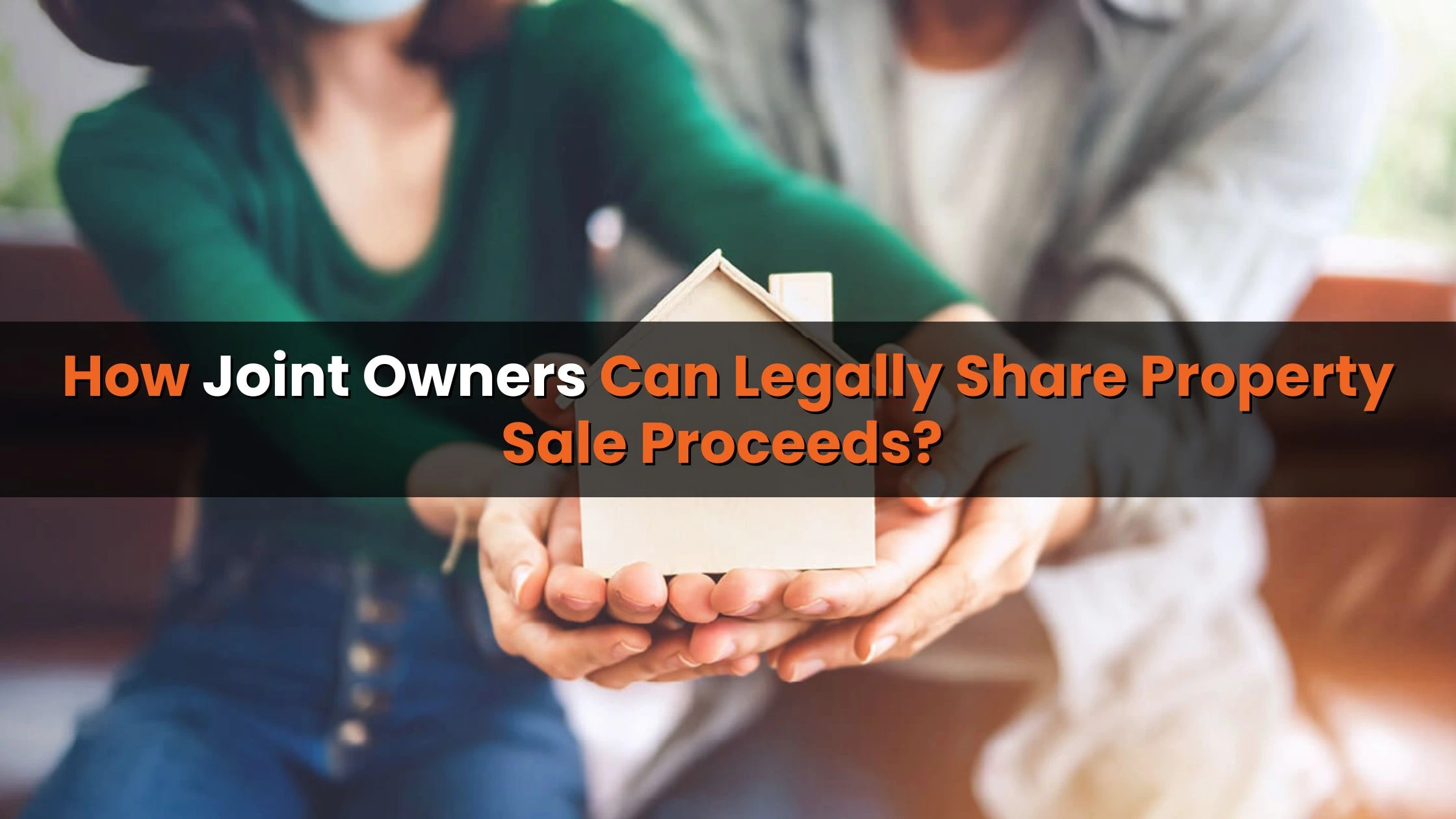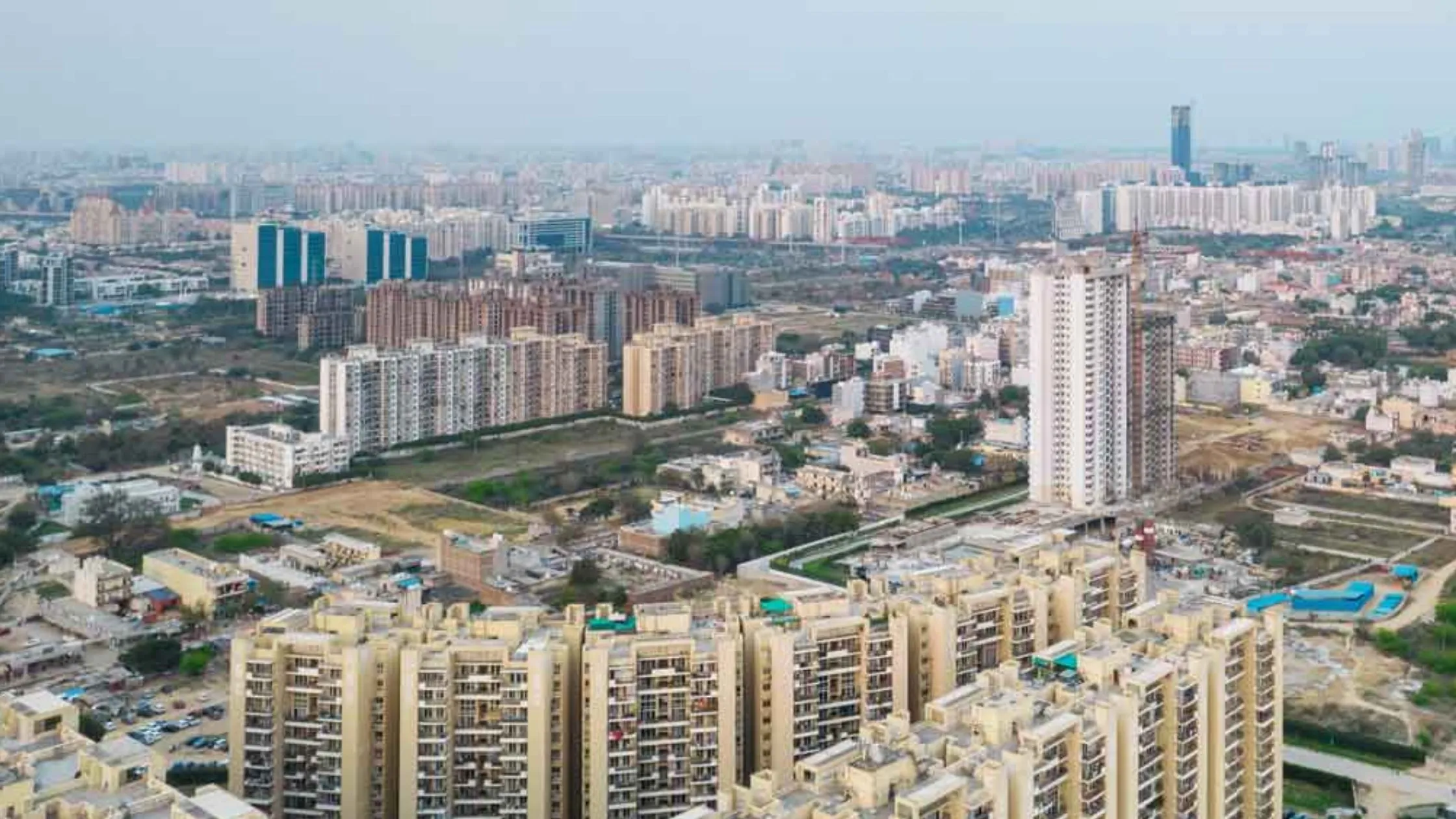Table of Content
- What is UDS in Real Estate?
- Why is UDS Important?
- UDS in Apartments and Flats: Ownership Rights
- Documents Related to UDS in Real Estate
- Significance of UDS for Homeowners
- Steps to Calculate UDS in Real Estate
- UDS and RERA Guidelines
- Selling Undivided Share of Land
- Things you should know about UDS
- Conclusion
When purchasing an apartment, homebuyers often come across certain terms they may not be familiar with. One such important term is the Undivided Share (UDS) of land. The UDS plays a crucial role when buying a property in a residential complex or a large housing project.
What is UDS in Real Estate?
When purchasing an apartment or property within a residential complex, two main expenses dictate its price — the expense of the building and the expense of the land. While the building you reside in is the physical apartment, the Undivided Share of Land (UDS) signifies the portion of the land associated with your property. It is the fractional part of the overall property you possess together with other occupants in the complex.
However, UDS is characterized by an intangible division of ownership rather than physical borders or isolated parcels. For example, if an apartment complex occupies 5,000 sq ft of property and contains 10 equally-sized units, each owner possesses a 500 sq ft UDS.
As the built structure loses value over time, the land's worth increases, making UDS essential for a property's future resale value. Basically, the greater the land you possess (through UDS), the better your advantages over time.
Also Read: Circle Rates in Delhi: A Complete Guide for Homebuyers
Why is UDS Important?
1. Land Value Appreciation
Unlike the building structure, which loses value with time due to wear and tear, land is an appreciating asset. UDS is directly tied to the value of the land, which makes it a critical determinant of your property’s future price.
2. Compensation in Redevelopment or Acquisition
In the event of redevelopment or if the government takes the land for public use, compensation is assessed according to the UDS held by each owner. This positions UDS ownership as a crucial element in optimizing compensation.
3. Car Parking Rights
Dedicated car parking spaces hold value because their UDS contributes to the total ownership. For car parks, buyers must ensure that the developer includes this land share in legal documents.

UDS in Apartments and Flats: Ownership Rights
In multi-tenancy buildings like apartments or gated communities, UDS clarifies the ownership structure for common areas and the land beneath the project. Here’s how it impacts the residents:
- Ownership of Common Areas: UDS allocates shared ownership of lobbies, staircases, gardens, elevators, and other common spaces to all owners proportionately.
- Decision-Making in Future Projects: Owners with higher UDS have a greater say in decisions like redevelopment or renovations.
- Society Management: UDS determines voting rights in society meetings, with a larger UDS offering greater influence.
- Maintenance Fees: Maintenance costs are calculated based on UDS, ensuring proportional contribution by all unit owners.
For homeowners, UDS is not just ownership of the apartment but the right to a slice of the land, a valuable long-term asset.
Also Read: Mutation of Property: Documents Required, Fees, and Penalties Explained
Documents Related to UDS in Real Estate
1. Sale Deed:
This legal document explicitly mentions the UDS, granting the owner the right to make decisions regarding the property.
2. Building Bye-Laws and Society Rules:
These regulations outline the roles, rights, and responsibilities of each owner concerning the common property and land.
3. Society Minutes:
Decisions related to redevelopment, maintenance, or renovation influenced by UDS are recorded here for transparency.
Significance of UDS for Homeowners
1. Ownership of Shared Spaces
Your UDS determines your ownership rights over common areas such as parking spaces, staircases, parks, or terraces in an apartment complex.
2. Transfer of Property
When you purchase an apartment, the seller transfers their UDS along with the flat. This ensures the land rights are legally yours.
3. Maintenance Costs
Societies calculate maintenance fees based on the UDS of each apartment to ensure fair contribution.
4. Impact on Property Value
UDS has a major impact on the resale value of a property. For instance, gated neighborhoods featuring large communal areas and facilities typically demand elevated prices because of their increased UDS.
5. Legal Documentation for Home Loans
Financial institutions assess the UDS when approving home loans, as it directly impacts the property’s ownership value.
6. Redevelopment Benefits
In redevelopment projects, compensation or the allocation of new units depends on the UDS each owner holds.
Steps to Calculate UDS in Real Estate
Calculating the UDS of a property is straightforward:
Formula:
UDS = (Super built-up area of your unit / Super built-up area of all units) x Total land area
Example:
Consider a project built on 10,000 sq ft of land with 5 apartments of equal size (1,000 sq ft super built-up area each). The UDS for each apartment would be:
UDS= (1,000 / 5,000 ) x 10,000 = 2,000 sq ft
In projects with apartments of varying sizes, UDS is proportional to the size of each unit.
UDS and RERA Guidelines
1. The Real Estate Regulatory Authority (RERA): RERA requires builders to reveal UDS information in purchase contracts. Essential elements consist of:
2. Clarity: Contractors are required to detail the UDS for every unit, avoiding any deception or fraud.
3. Precise Calculations: The UDS computation should rely on the land area and the unit’s relative portion.
4. Legal Certainty: UDS guarantees that purchasers possess unmistakable legal ownership of their portion of the land.
Selling Undivided Share of Land
When selling a property, the UDS is transferred to the new buyer, along with ownership rights of the structure. The buyer becomes a co-owner of the total land. However, it’s crucial to:
- Verify UDS details in the sale deed.
- Ensure the society or association approves the transaction with a No Objection Certificate (NOC).
- Register the transfer of ownership to legalize the sale.
Things you should know about UDS
- Your Agreement for Sale must clearly mention the UDS (Undivided Share of Land). If it is not specified, you should ask the builder to include it.
- In case there is a discrepancy between the UDS promised and what is mentioned in the agreement, clarify it with the builder before proceeding with the document registration.
- For home loan applicants, banks will verify the UDS as part of the loan approval process. If you are purchasing a resale property, they will also check the share certificate issued by the housing society.
- During property registration, the sub-registrar will also examine the share certificate.
- In most co-operative housing societies, the UDS is typically divided equally among all members, regardless of the size of their individual units.
Conclusion
Understanding UDS is pivotal for investing in apartments, flats, or multi-unit properties. UDS not only guarantees land ownership but also impacts property value, redevelopment benefits, and maintenance responsibilities. Whether you’re buying, selling, or redeveloping a property, clarity on UDS ensures informed decisions and safeguards long-term ownership rights.
By recognizing its significance, homeowners can better appreciate their stake in the property, maximize their returns, and contribute to efficiently managing shared resources. In a competitive real estate market, UDS knowledge is your key to unlocking greater value and securing a sound investment.
Also Read: NCLAT Approves NBCC to Finish 16 Delayed Supertech Projects

_1734419986.webp)





_1767769068.webp)




Ans 1. UDS refers to the proportionate share of land an apartment or property owner holds in a multi-unit residential project. It is a fraction of the total land area associated with your unit, not a physically separate piece of land.
Ans 2. UDS is calculated using the formula: UDS = (Super built-up area of your unit / Super built-up area of all units) x Total land area. For example, if an apartment complex has 5 units and a total land area of 10,000 sq ft, each unit with 1,000 sq ft super built-up area would have a UDS of 2,000 sq ft.
Ans 3. UDS is crucial as it impacts the land value appreciation, future resale value, parking rights, and compensation in case of redevelopment. It also determines your rights to common areas and voting power in the society.
Ans 4. Yes, UDS plays a significant role in the resale value of a property. Since land typically appreciates over time, a higher UDS means better potential returns on investment, as the value of land increases while the building structure depreciates.
Ans 5. UDS is mentioned in the Sale Deed, the Agreement for Sale, and building bye-laws. These documents should clearly outline your UDS share to avoid any confusion or disputes.
Ans 6. Banks and financial institutions assess the UDS when approving home loans as it represents the legal share of land owned by the borrower. A higher UDS can make the property more valuable and, in turn, more eligible for higher loan amounts.
Ans 7. In case of redevelopment, the UDS helps determine how much compensation each owner is entitled to. It is also used to allocate new units or determine the financial share during the redevelopment process.
Ans 8. In multi-unit buildings, UDS is typically shared proportionately based on the size of each unit. The larger the unit, the higher the share of land (UDS) allocated to it, which affects ownership rights to common areas.
Ans 9. Yes, the UDS is transferred along with the apartment when selling the property. The buyer assumes the same share of land and associated rights as the previous owner, which is documented in the Sale Deed.
Ans 10. Maintenance costs are calculated based on UDS, meaning owners with higher UDS contribute more to the maintenance of common areas. UDS also impacts decision-making power in society management, such as voting rights in meetings.